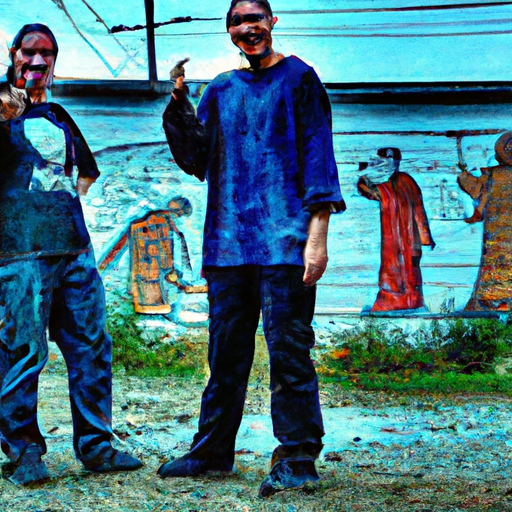The Canadian Opioid Crisis: A Damaging Epidemic Impacts First Nation Communities
Canada is in the throes of a dire opioid crisis that has perniciously permeated our communities. The damage and despair it leaves in its wake is evident countrywide, with everyone from cities to suburbs, now including the Indigenous communities. According to a recent report from Yahoo News Canada, the opioid crisis has had a profound impact on First Nations communities.
The Opioid Crisis: A Glance at its Impact on First Nation Communities
The grim outlook of the opioid epidemic is exacerbated within First Nations communities. Something indeed needs to be done, and urgently. Let’s fully comprehend the breadth and depth of the problem.
The Chilling Statistics
- Indigenous communities are affected more than anyone else in Canada by this crisis, with opioid poisoning rates being three to five times higher among First Nations individuals compared to non-Indigenous people.
- Alarmingly, one of the First Nations in Alberta had the highest fentanyl-related poisoning in all of Alberta, reflecting the urgent need for intervention efforts.
The grim statistics of the opioid crisis show that fentanyl, a potent opioid, is wreaking havoc in First Nations communities. This damage extends beyond physical harm, with communities witnessing escalating rates of homelessness and crime too.
The Ramifications: Homelessness and Crime
The opioid epidemic not only incurs a heavy human cost but also stirs up social problems. The surge in homelessness and crime within these heavily affected communities paints a stark portrait of the fallout from the opioid crisis.
Combatting the Opioid Crisis: Efforts and the Opioid Class Action
Recognizing the devastating toll that the opioid crisis takes, various efforts are in place to combat it. One such response is the distribution of naloxone. Naloxone is an opioid overdose reversal drug, and its distribution within the communities is acting as a lifeline for many.
Opioid Class Action: A Ray of Hope?
Another source of possible aid comes from opioids manufacturers and distributors. A significant step towards holding these entities accountable is the proposed national opioid class action. This lawsuit aims to provide much-needed financial support to communities impacted by opioids, helping them cope and recover.
First Nations’ Monumental Decision
First Nations chiefs recently voted to forge their distinct path, away from this national opioid class action. This profound decision taken at the Assembly of First Nations allows them to have greater control over their own legal strategy.
Resilience Amidst Crisis: A Critical Need for Action
While the above measures provide some solace, it’s clear that a more comprehensive, holistic, and targeted approach is needed. The high levels of opioid poisonings, homelessness, and crime, particularly in First Nations communities, should serve as a wake-up call. We must fervently push for more resources, well-coordinated health services, awareness programs, and policies to address the underlying social issues.
In Summary:
- First Nations communities are being disproportionately affected by the opioid crisis, with significantly higher rates of opioid poisonings.
- The crisis brings with it amplified homelessness and crime.
- Efforts such as the distribution of naloxone and the opioid class action suit are in place to battle the crisis.
- The opioid class action represents a significant attempt to hold accountable manufacturers and distributors of opioids.
- First Nations communities have decided to steer their own path, making decisions that best suit their circumstances in this crisis.
A Conclusion and a Call to Action
The Canadian opioid crisis is a complex problem that, unfortunately, has hit First Nations communities severely. This crisis is multilayered, deeply entwined with social issues like homelessness, crime, and healthcare access. While interventions such as naloxone distribution and the opioid class action are critical starting points, much more needs to be done. The fierce resilience of First Nations communities is inspirational. Their decision to carve their legal path in response to the crisis highlights their determination to control their destiny. But the crisis is not theirs to face alone. As Canadians, we must unite in our commitment to help address this issue collectively, with empathy and urgency.


